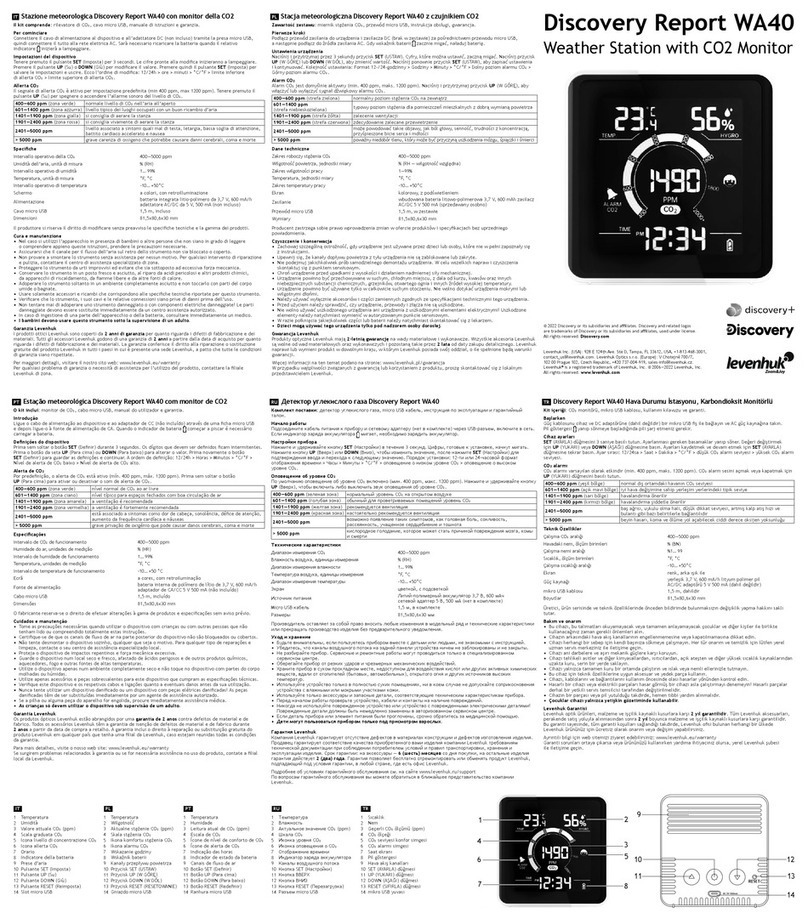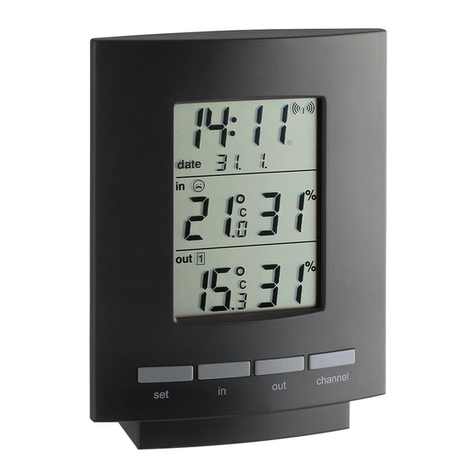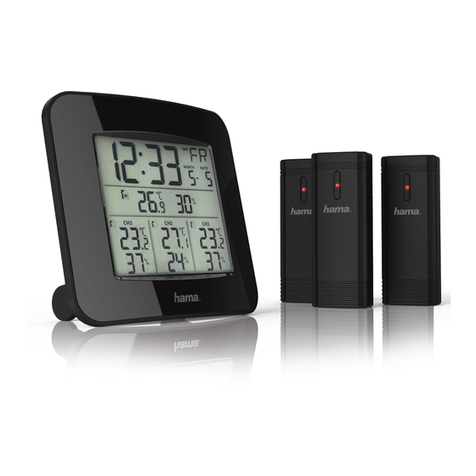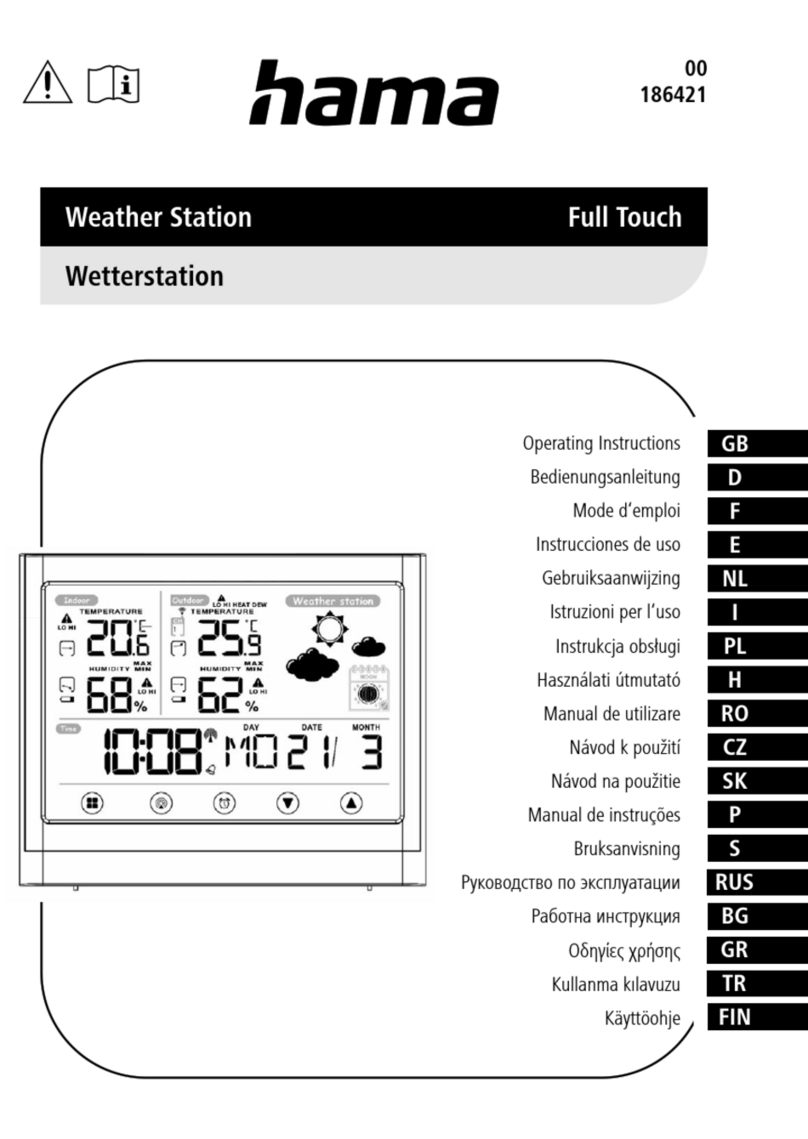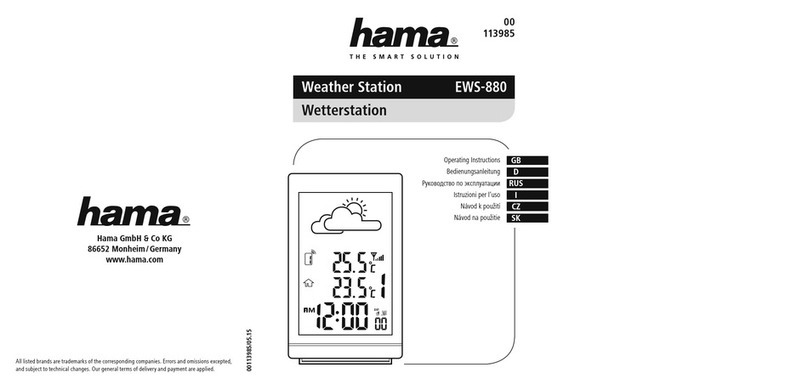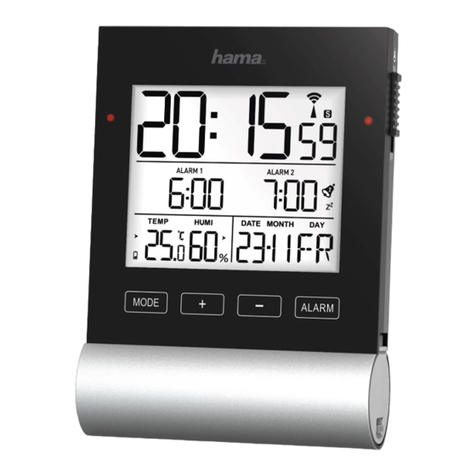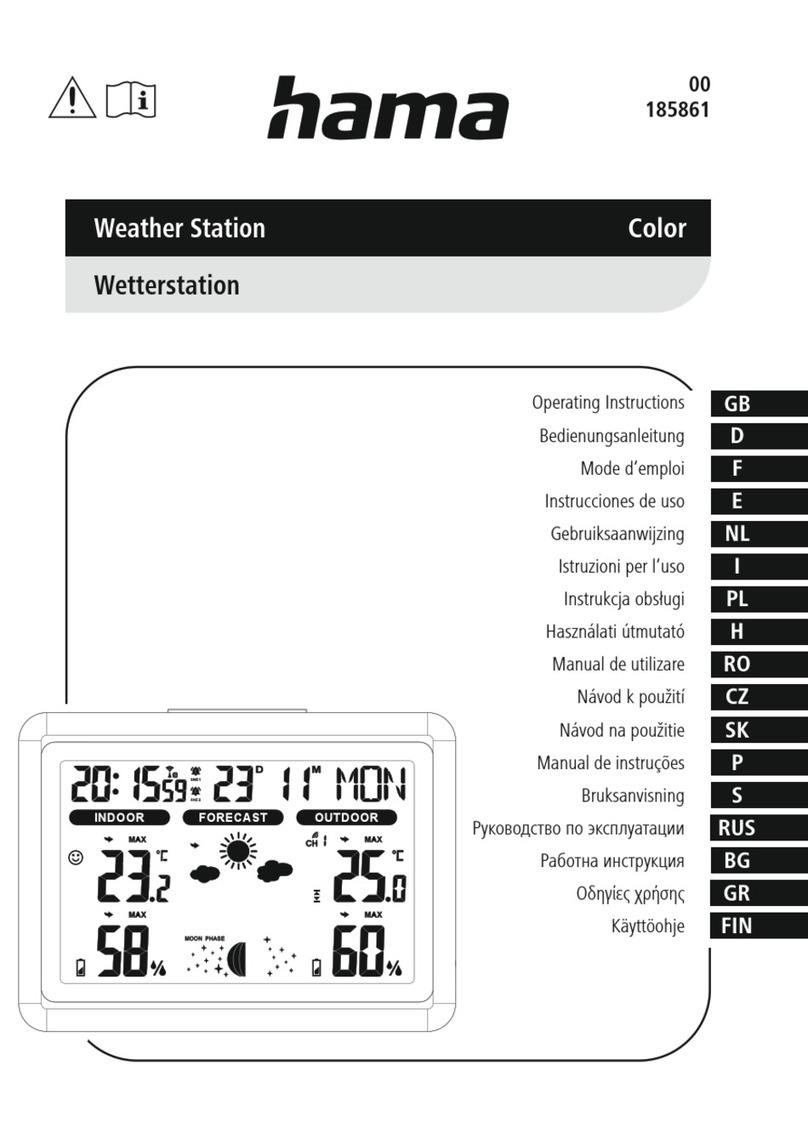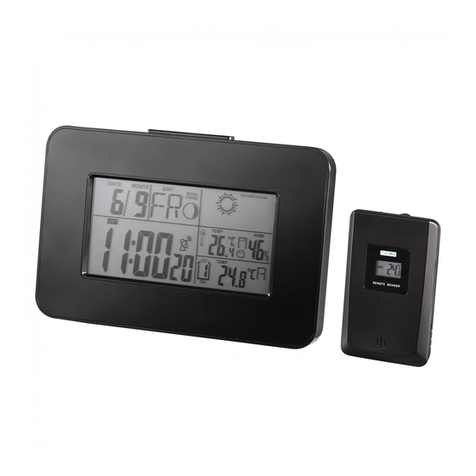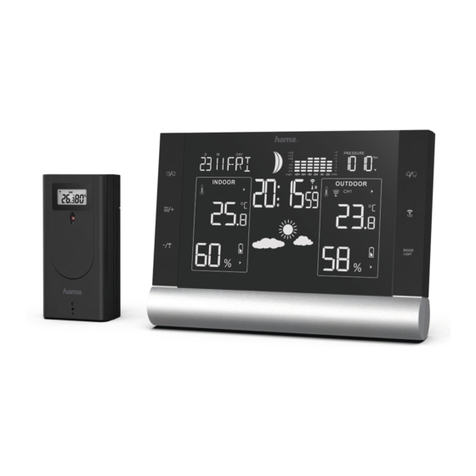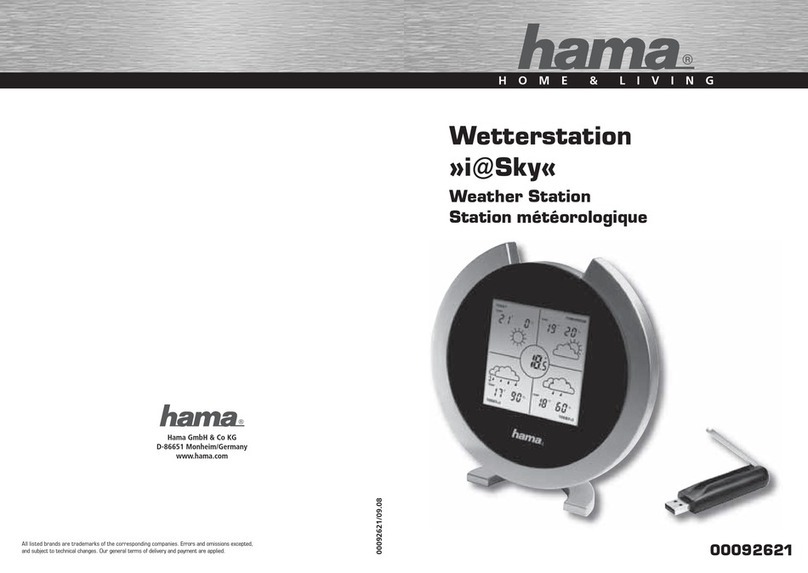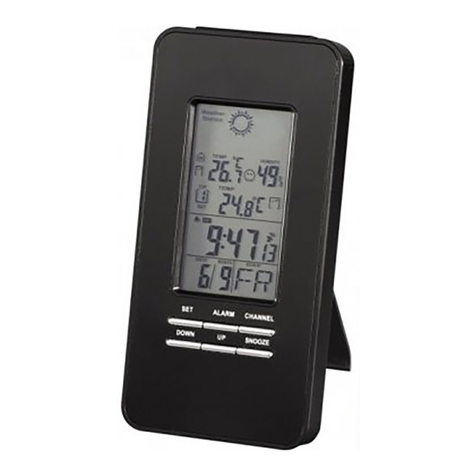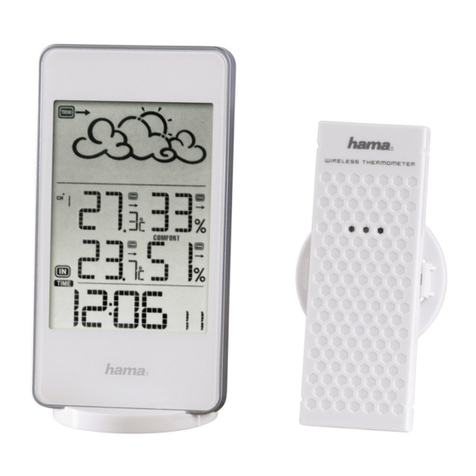
9
•Lassen Sie das Produkt nicht fallen und setzen Sie es
keinen heftigen Erschütterungen aus.
•Öffnen Sie das Produkt nicht und betreiben Sie es bei
Beschädigungen nicht weiter.
•Versuchen Sie nicht, das Produkt selbst zu warten oder zu
reparieren. Überlassen Sie jegliche Wartungsarbeit dem
zuständigen Fachpersonal.
•Halten Sie Kinder unbedingt von dem Verpackungsmaterial
fern, es besteht Erstickungsgefahr.
•Entsorgen Sie das Verpackungsmaterial sofort gemäß den
örtlich gültigen Entsorgungsvorschriften.
•Nehmen Sie keine Veränderungen am Produkt vor.
Dadurch verlieren Sie jegliche Gewährleistungsansprüche.
•Verwenden Sie das Produkt ausschließlich für den dazu
vorgesehenen Zweck.
•Schützen Sie das Produkt vor Schmutz, Feuchtigkeit und
Überhitzung und verwenden Sie es nur in trockenen
Umgebungen.
•Dieses Produkt gehört, wie alle elektrischen Produkte, nicht
in Kinderhände!
•Verwenden Sie den Artikel nur unter moderaten
klimatischen Bedingungen.
Warnung -Batterien
•Beachten Sie unbedingt die korrekte Polarität
(Beschriftung +und -) der Batterien und legen Sie
diese entsprechend ein. Bei Nichtbeachtung besteht
die Gefahr des Auslaufens oder einer Explosion der
Batterien.
•Verwenden Sie ausschließlich Akkus (oder Batterien), die
dem angegebenen Typentsprechen.
•Reinigen Sie vor dem Einlegen der Batterien die
Batteriekontakte und die Gegenkontakte.
•Gestatten Sie Kindern nicht ohne Aufsicht das Wechseln
von Batterien.
•Mischen Sie alte und neue Batterien nicht, sowie
Batterien unterschiedlichen Typs oder Herstellers.
•Entfernen Sie Batterien aus Produkten, die längereZeit
nicht benutzt werden (außer diese werden für einen
Notfall bereit gehalten).
•Schließen Sie die Batterien nicht kurz.
•Laden Sie Batterien nicht.
•Werfen Sie Batterien nicht ins Feuer.
•Entfernen und entsorgen Sie verbrauchte Batterien
unverzüglich aus dem Produkt.
•Vermeiden Sie Lagerung, Laden und Benutzung bei
extremen Temperaturen und extrem niedrigem Luftdruck
(wie z.B. in großen Höhen).
•Bewahren Sie Batterien außerhalb der Reichweite von
Kindern auf.
•Batterien nie öffnen, beschädigen, verschlucken oder
in die Umwelt gelangen lassen. Sie können giftige und
umweltschädliche Schwermetalle enthalten.
4.
Inbetriebnahme
Hinweis
Beachten Sie, dass Sie bei der Inbetriebnahme immer
zuerst die Batterien in die Messstation, und dann in die
Basisstation einlegen.
4.1 Messstation
•Öffnen Sie das Batteriefach (21) und legen Sie 2AA
Batterien polrichtig ein.
•Wählen Sie mit dem Schiebeschalter (20) den Kanal
aus, auf dem die jeweilige Messstation senden soll. Jede
der 3Messstationen muss einen anderen Kanal nutzen!
•Schließen Sie die Batteriefachabdeckung anschließend.
4.2 Basisstation
•Öffnen Sie das Batteriefach (15) und legen Sie 3AAA
Batterien polrichtig ein.
•Schließen Sie die Batteriefachabdeckung anschließend.
4.3 Batterien wechseln
Hinweis –Batteriewechsel
•Beachten Sie, dass nach jedem Batteriewechsel an
Mess- oder Basisstation eine neue Synchronisation
erfolgen muss.
•Nehmen Sie dazu die Batterien der anderen Station
heraus und setzen sie erneut ein oder wechseln Sie diese
bei Bedarf ebenfalls aus.

